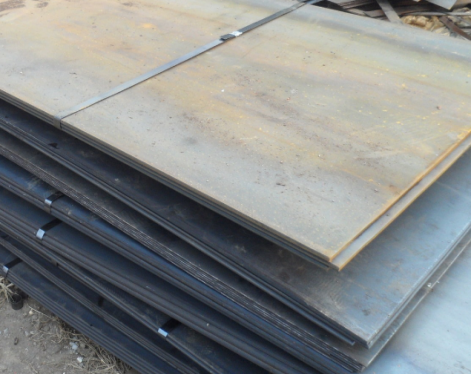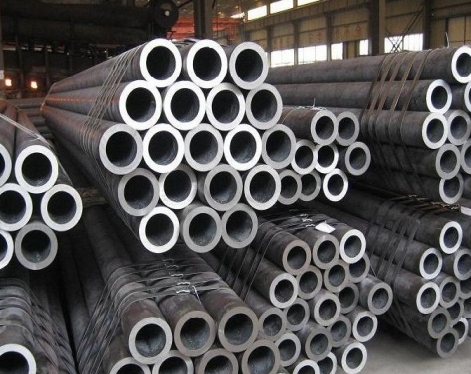When purchasing carbon steel plate, there are several factors to consider to ensure that the plate you choose meets your specific needs and standards. Here are some key factors:
1. Types and uses of carbon steel materials
There are many types of carbon steel materials. Choose the appropriate carbon steel material according to the required strength, toughness, hardness and other requirements. Common carbon steel materials include low carbon steel, medium carbon steel and high carbon steel. Different types of carbon steel materials have different mechanical properties and are suitable for different fields, such as steel structures, machinery manufacturing, petrochemicals, shipbuilding, etc.
2. Understand the specifications of carbon steel materials
The specifications of carbon steel materials include length, width, thickness and other requirements. When purchasing carbon steel materials, the required specifications need to be determined based on the specific use to meet the material strength and size requirements.

3. Chemical composition
Select the appropriate chemical composition based on the required performance requirements such as strength, hardness, corrosion resistance, etc. The carbon content in carbon steel usually ranges from 0.2% to 2.1%, and other alloying elements such as chromium, molybdenum, manganese, etc. will also affect the material properties.
4. Quality Assurance
Understanding the qualifications of suppliers and choosing suppliers with corresponding qualifications, rich experience, and reliable production quality can ensure that the purchased carbon steel materials meet relevant national standards and quality requirements. And check its quality certificate and chemical composition report to ensure that the steel plate meets your needs.
5. Reasonable price
When purchasing carbon steel plates, you should pay attention to cost performance and choose products with reasonable prices. Look for multiple suppliers. The quality and price of materials provided by different suppliers may vary. It is recommended to compare multiple suppliers before purchasing and choose a supplier with high credibility and reasonable price.
6. Processing performance
According to the specific processing needs, select the appropriate carbon steel material. Different carbon steel materials will have differences in cold working, hot working and welding.
7.Application environment
Consider the environmental conditions in which the material will be used. Different environmental conditions may have requirements on the corrosion resistance and heat resistance of materials.
Determine the purchasing process:
1. Sign a purchase contract: After selecting a supplier, you need to sign a purchase contract. The contract content should include specific contents such as purchase quantity, specifications, delivery time, quality acceptance standards, payment method, etc.
2. Pay deposit or full payment: According to the contract requirements, pay deposit or full payment as required.
3. Material acceptance: After receiving the materials, multiple inspections such as appearance inspection, dimensional inspection, and chemical composition testing are required to ensure that the materials meet the acceptance standards.
4. Complete the purchase transaction: After the materials are accepted and accepted, complete the remaining payment and complete the purchase transaction.
Conclusion:
Through the introduction of this article, I believe everyone has a more comprehensive understanding of carbon steel plate procurement. When purchasing carbon steel plates, factors such as the type, mechanical properties, specifications, chemical composition, quality assurance, price, processing performance and application environment of carbon steel materials need to be comprehensively considered to ensure that the purchased steel plates meet specific usage requirements and standards.
Read more: Things to Note When Purchasing Stainless Steel Plates
1. Types and uses of carbon steel materials
There are many types of carbon steel materials. Choose the appropriate carbon steel material according to the required strength, toughness, hardness and other requirements. Common carbon steel materials include low carbon steel, medium carbon steel and high carbon steel. Different types of carbon steel materials have different mechanical properties and are suitable for different fields, such as steel structures, machinery manufacturing, petrochemicals, shipbuilding, etc.
2. Understand the specifications of carbon steel materials
The specifications of carbon steel materials include length, width, thickness and other requirements. When purchasing carbon steel materials, the required specifications need to be determined based on the specific use to meet the material strength and size requirements.

3. Chemical composition
Select the appropriate chemical composition based on the required performance requirements such as strength, hardness, corrosion resistance, etc. The carbon content in carbon steel usually ranges from 0.2% to 2.1%, and other alloying elements such as chromium, molybdenum, manganese, etc. will also affect the material properties.
4. Quality Assurance
Understanding the qualifications of suppliers and choosing suppliers with corresponding qualifications, rich experience, and reliable production quality can ensure that the purchased carbon steel materials meet relevant national standards and quality requirements. And check its quality certificate and chemical composition report to ensure that the steel plate meets your needs.
5. Reasonable price
When purchasing carbon steel plates, you should pay attention to cost performance and choose products with reasonable prices. Look for multiple suppliers. The quality and price of materials provided by different suppliers may vary. It is recommended to compare multiple suppliers before purchasing and choose a supplier with high credibility and reasonable price.
6. Processing performance
According to the specific processing needs, select the appropriate carbon steel material. Different carbon steel materials will have differences in cold working, hot working and welding.
7.Application environment
Consider the environmental conditions in which the material will be used. Different environmental conditions may have requirements on the corrosion resistance and heat resistance of materials.
Determine the purchasing process:
1. Sign a purchase contract: After selecting a supplier, you need to sign a purchase contract. The contract content should include specific contents such as purchase quantity, specifications, delivery time, quality acceptance standards, payment method, etc.
2. Pay deposit or full payment: According to the contract requirements, pay deposit or full payment as required.
3. Material acceptance: After receiving the materials, multiple inspections such as appearance inspection, dimensional inspection, and chemical composition testing are required to ensure that the materials meet the acceptance standards.
4. Complete the purchase transaction: After the materials are accepted and accepted, complete the remaining payment and complete the purchase transaction.
Conclusion:
Through the introduction of this article, I believe everyone has a more comprehensive understanding of carbon steel plate procurement. When purchasing carbon steel plates, factors such as the type, mechanical properties, specifications, chemical composition, quality assurance, price, processing performance and application environment of carbon steel materials need to be comprehensively considered to ensure that the purchased steel plates meet specific usage requirements and standards.
Read more: Things to Note When Purchasing Stainless Steel Plates









